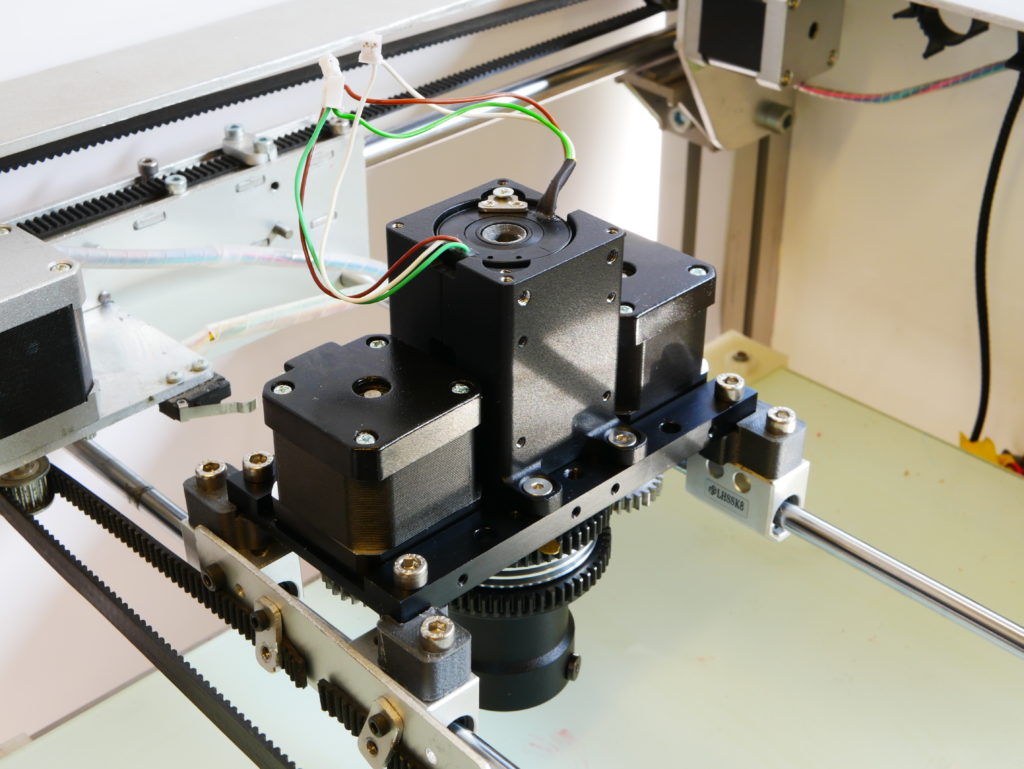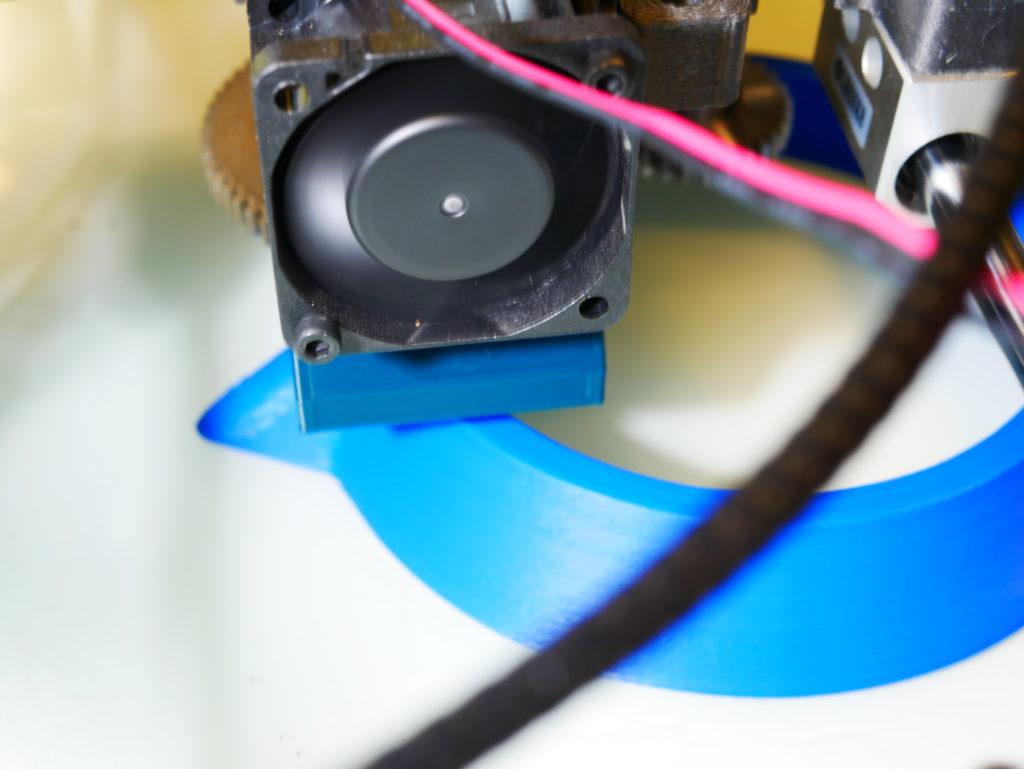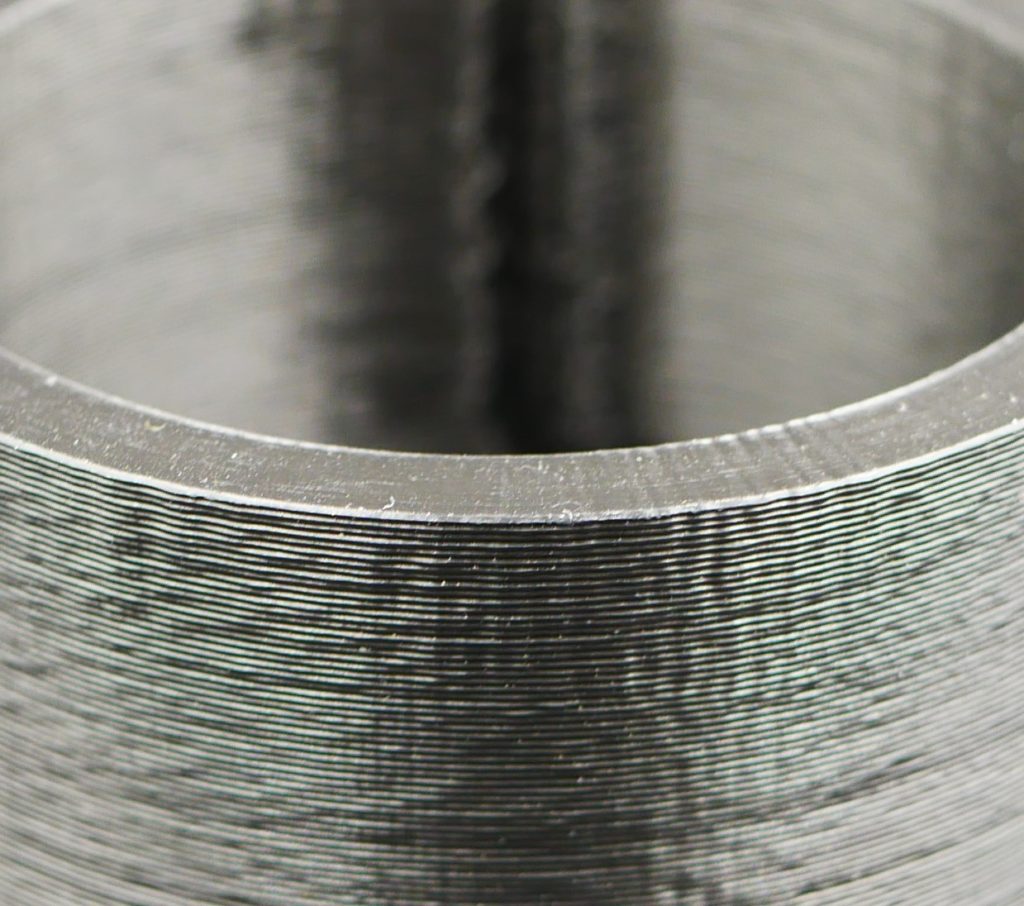In material extrusion, you’ve traditionally been tied to one nozzle geometry and size. Ideally, you may want to have a larger nozzle to make large interior areas and a finer one to make edges and details. In this way, one can strike the right balance between speed and accuracy.
Several companies have attempted to do this either through tool changing or physically changing the nozzle diameter. They’ve mostly been unsuccessful due to factors like wall slip changes, pressure build up in the nozzle, lack of coordination between the nozzle and the feeder and more. A Belgian company, Sculpman, has been working for two years on its solution to having the best nozzle every single time.

The company has a novel way of doing this it calls “Variable Nozzle Technology”, in which the nozzle continually changes in size throughout deposition. At the same time, the nozzle is made so that is extrudes a flat layer. Sculpman’s aim was to also improve layer adhesion by creating more surface area for the layers to adhere to. The company also claims that its Tagliatelle-not-Spaghetti way of extruding also means that they can print faster, with greater homogeneity and part quality.

“Cylindrical tracks that are placed horizontally next to each other produce a wave pattern. Even if they are squished slightly flat by the nozzle, the area where both tracks touch is still small, as each track’s cross-section is elliptic and only the mid-section of the sides touch. If you come to think of it, it’s very similar to painting a picture. If you need high detail, a small pencil is the better choice. However, if larger areas need to be filled in, you’d be better of using a broad brush,” Gerolf Vanacker, co-founder of Sculpman, said. “We currently offer this system in a 0 to 10 mm opening configuration with a cross-section of 0.5mm featuring a build rate of 500 cm3 per hour. The cross-section is what limits the possible layer heights you can use. Typically, one can go as low as 1/5th of the cross-section and up to close to 100% of it.”

Additionally, the nozzle can completely stop to halt flow entirely. The company has also worked on its own slicing software to make the process work. Currently, they’re using 2.85mm for Bowden and direct drive and they’re working on pellet extrusion also. Their business model is to supply OEMs with their equipment and will be at Formnext Hall 11, Booth D11 to discuss this with companies that are interested.

There’s a lot to like here. First off, it’s nice to see someone innovate in fused deposition modeling (FDM). Fundamentally, the process has seen little change, but instead continuous improvement over time. Maybe we are doing it wrong, all of us. The idea of printing in a ribbon form and extruding faster with more layer adhesion is something that I really like. It could provide FDM with better strength and perhaps even better accuracy.
I like the ribbon approach and it feels intuitively true so that’s nice, but does not actually mean anything. So, I’d be curious to see how it works day-to-day. I can’t understand how this approach solves the problems of built-up pressure in the nozzle itself. This should be especially problematic when reducing the nozzle diameter. If the team has truly solved this, then that could be quite the breakthrough. If they do this through a sensor-based approach and modulate the nozzle size in tandem with pressure, then they could have a process that could be super interesting.
By working on an Ultimaker testbed and using 2.85mm, they have seriously reduced the number of potential suitors though, at least immediately. I also really hate the business model. I think that the level and thoroughness of the discussions you would need with an OEM in order to implement this would be substantial. The alterations they would have to make to their machines would have to be considerable also, not to mention the software changes. This to me would take so long that they’re going to run out of cash before they get anywhere.
In my opinion it would be much better to either sell themselves directly to an OEM or make their own machine. E3D has drop-in nozzles and other equipment that OEMs can test very simply. The evaluation is also simple, as is the adoption of an E3D nozzle instead over an alternative. That to me works. This will simply be too difficult in the sales and business development area to make it work. They’d have to really get lucky or click with one vendor to quickly get out a product. And then, they’re dependent on that one forever? I really like the way that they’ve tackled the innovation aspect here, but the business will be difficult.
Instead, the company should look at making their own printer or making a large format system. Large format material extrusion is a very fragmented market. Here, problems with layer adhesion become very critical and any improvement in build speed has considerable advantages. In that market, large-scale printing still has a ways to go to be a crowded space. At the same time, this firm developed the software and the nozzle, the two critical components. The rest of the printer is comparatively simple to do. They could easily outsource that to an engineering firm.
Subscribe to Our Email Newsletter
Stay up-to-date on all the latest news from the 3D printing industry and receive information and offers from third party vendors.
You May Also Like
US Army Corps of Engineers Taps Lincoln Electric & Eaton for Largest 3D Printed US Civil Works Part
The Soo Locks sit on the US-Canadian border, enabling maritime travel between Lake Superior and Lake Huron, from which ships can reach the rest of the Great Lakes. Crafts carrying...
Construction 3D Printing CEO Reflects on Being Female in Construction
Natalie Wadley, CEO of ChangeMaker3D, could hear the words of her daughter sitting next to her resounding in her head. “Mum, MUM, you’ve won!” Wadley had just won the prestigious...
Blue Laser-powered M600 3D Printer Launched by Meltio
Founded in 2019 as a joint venture between Additec and Sicnova, metal 3D printer OEM Meltio develops and manufactures high-performance and easy-to-use metal 3D printing solutions that use its patented wire-laser metal...
3D Printed Storage Tanks Cut Material Costs by 25%
In a previous article, “Concrete Dreams: Let’s Print Money, Not Houses,” we discussed how the spotlight on 3D printing homes might be misplaced. Bollards, pedestrian bridges, and concrete tanks could...





























